Europe

Mouflon reintroduced in Europe
"Ovis aries musimon"
Variety in coats, predominantly dark brown to almost black, with white belly and legs. Males have a marked white saddle on the flanks. Horns of different configurations. Reintroduced in practically all European countries.
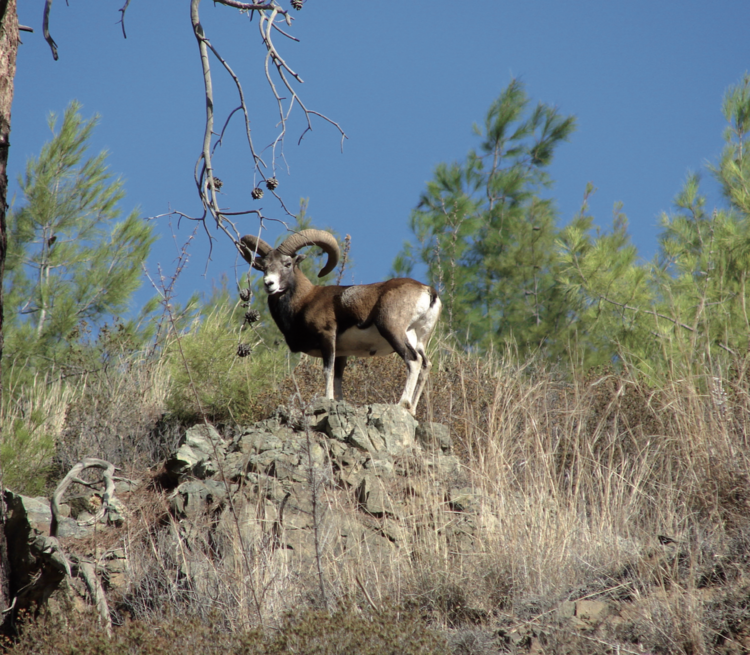
Cyprus Mouflon
"Ovis aries ophion"
Reddish-brown coat, with black hairs in the mane of males and the typical white saddle on the flanks. Crescent-shaped horns curved in a single plane, the tips can be directed to the neck or supracervical. Species endemic to Cyprus.
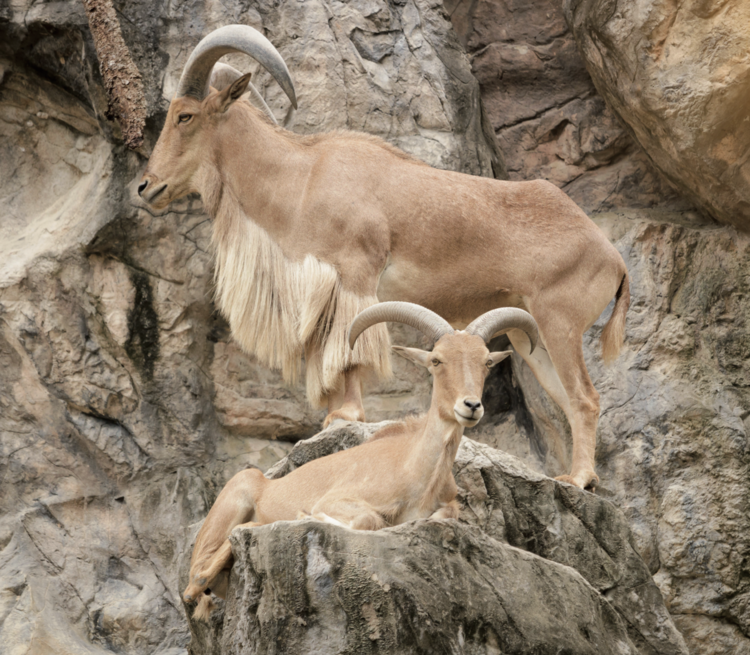
Arruí introduced in Spain
"Ammotragus lervia"
Straw color. They do not have a beard like goats, but have a well-developed mane from the throat to the chest and upper part of the front legs.
The horns are more similar to those of turkeys or barals than to those of goats.
Introduced in Spain, in the Sierra España National Reserve and in private reserves in Murcia and Alicante.
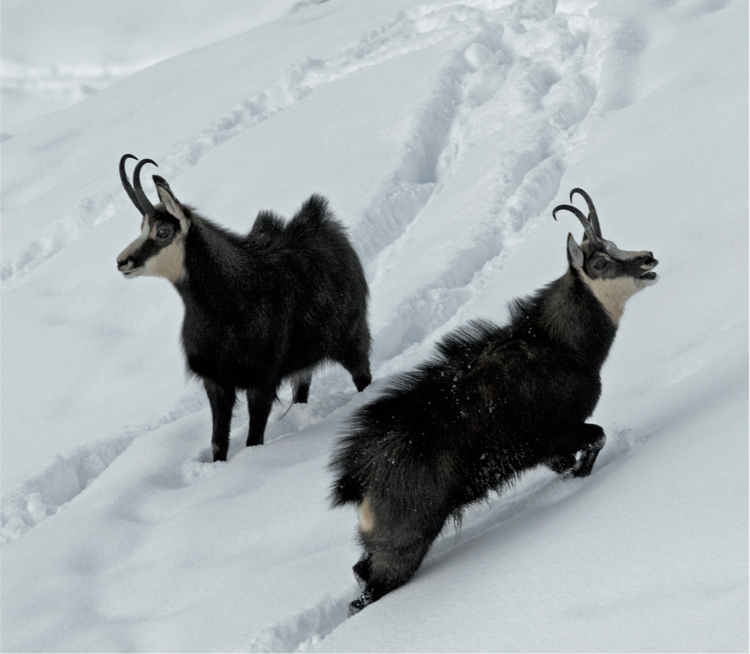
Alpine chamois or chamois
"Rupicapra rupicapra rupicapra"
The fur of adults, especially that of large males, is almost black.
Distribution throughout the Alps, in Austria, Germany, France, Italy, Slovakia, Czech Republic, Croatia, Liechtenstein, Poland and Switzerland. Also introduced in New Zealand.

Abruzzo chamois
"Rupicapra r. ornata"
They have the longest horns of all the chamois species and subspecies. The colouring is similar to that of the Pyrenean chamois but with an even more pronounced cream-coloured necktie.
It is endemic to Italy, living only in three small locations in the national parks of Abruzzo, Lazio and Molise, the Majella National Park and the Gran Sasso and Monte della Laga National Park.
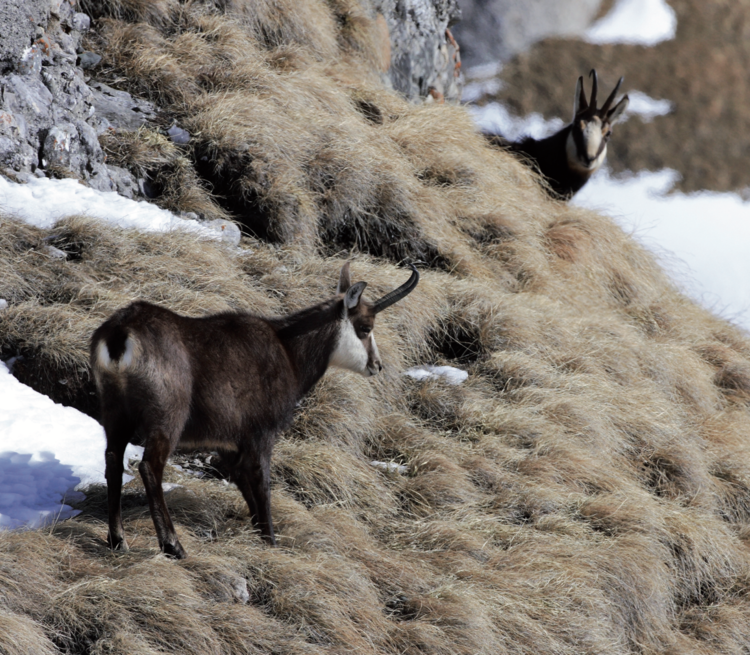
Carpathian chamois
"Rupicapra r. carpatica"
They tend to be even darker in colour than the Alpine chamois. Their horns are the thickest and most trophy-worthy of all the chamois. They are the largest-bodied of all of them.
They are endemic to Romania.
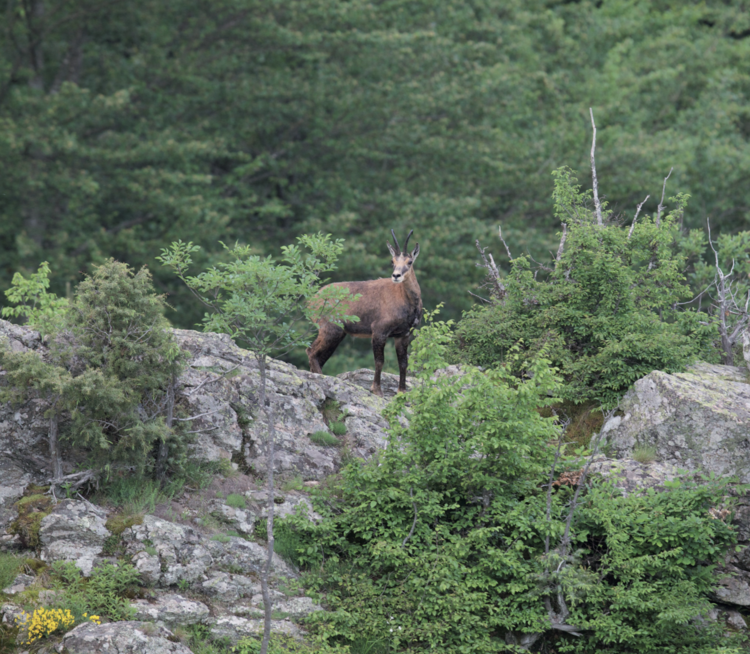
Balkan chamois
"Rupicapra r. balcanica"
It is somewhat smaller in body than the Alpine, and its summer coat is also somewhat redder than the Alpine. It has a characteristic dark dorsal stripe that runs along its entire back.
Countries where it is found are Albania, Bulgaria, Bosnia-Herzegovina, Greece, Macedonia, Montenegro and Serbia.
It lives in South Africa in the Cape Provinces.
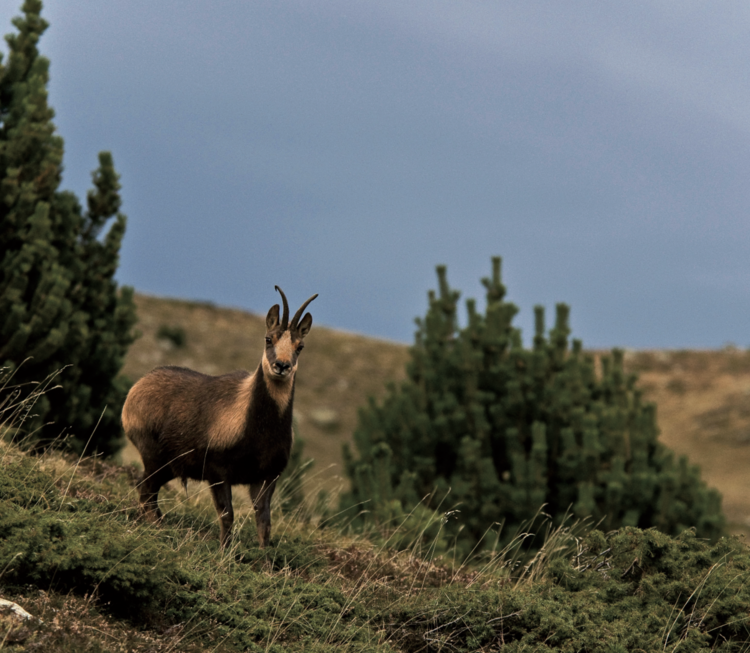
Pyrenean chamois or sarrio
"Rupicapra pyrenaica pyrenaica"
Some individuals stand out for the wide opening of their horns.
It is smaller in body size and horns than the Alpine chamois.
Endemic to the Pyrenees mountains in Spain, Andorra and France.
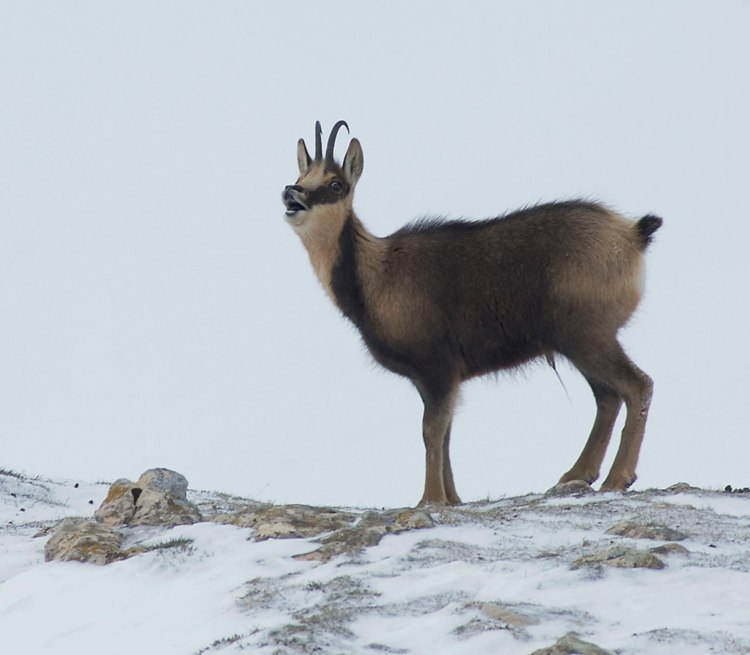
Cantabrian chamois
"Rupicapra pyrenaica parva"
It is the smallest of all chamois.
Endemic to the Cantabrian mountain range, the regions of Asturias and Cantabria, and the provinces of León and Palencia in Castilla y León.
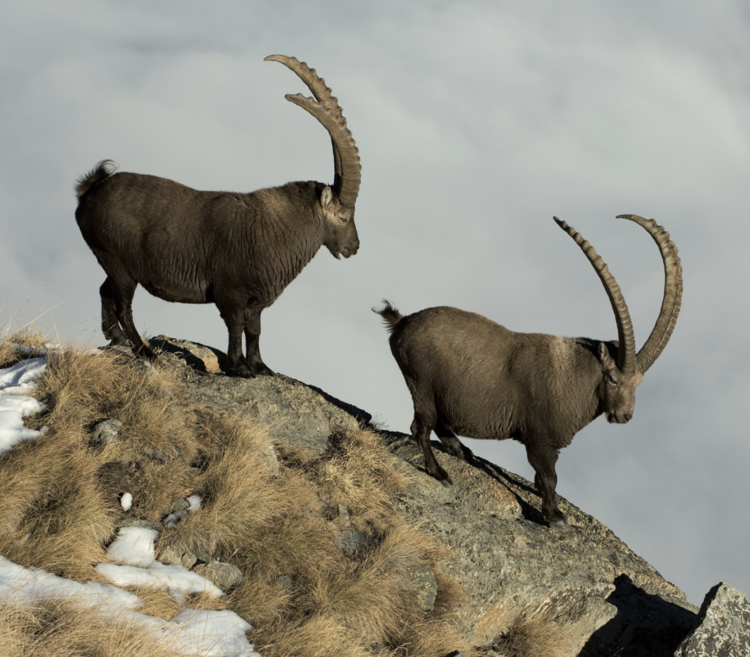
Alpine Ibex
"Capra Ibex"
It has a very uniform colour, which is dark brown in winter, short limbs and a very compact body. The horns are scimitar-shaped, oval in section, with marked knots.
It is found in Austria, Germany, France, Liechtenstein, Switzerland, Bulgaria and Slovenia.
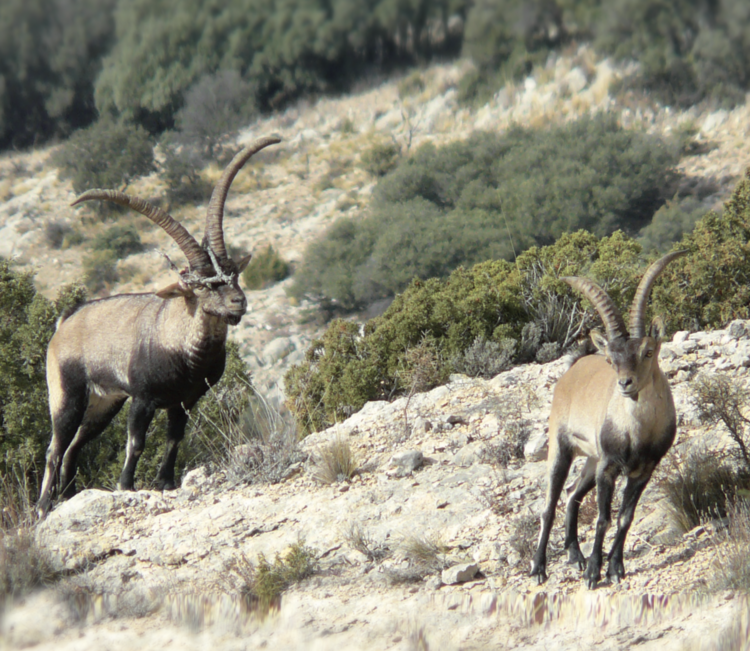
Beceite Goat
"Capra pyrenaica hispanica"
The adult males have lighter fur, and rarely turn completely black in winter, like those from Gredos. There are two types of horns, one lyre-shaped, although more open than those from Gredos, and another "airplane" type with horns that point upwards and outwards.
It lives in the Maestrazgo region, in the provinces of Teruel, Tarragona and Castellón, and in Valencia in the Muela de Cortes reserve.
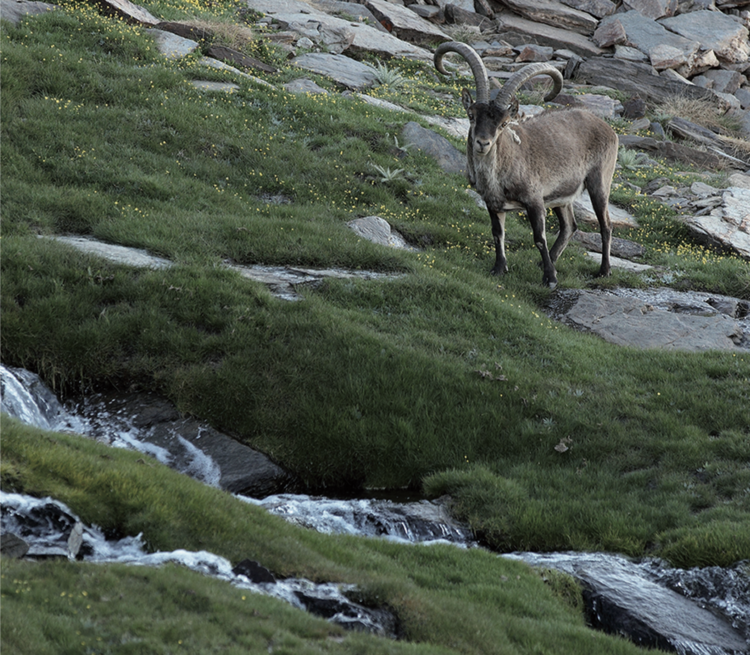
Southeast Goat
"Capra pyrenaica hispanica"
Smaller than those of Gredos and Beceite. Lighter in colour, it has ram-shaped horns, describing a very closed scimitar.
It lives in the Sierra Nevada National Park and adjacent areas in the provinces of Granada, Almería and Jaén.
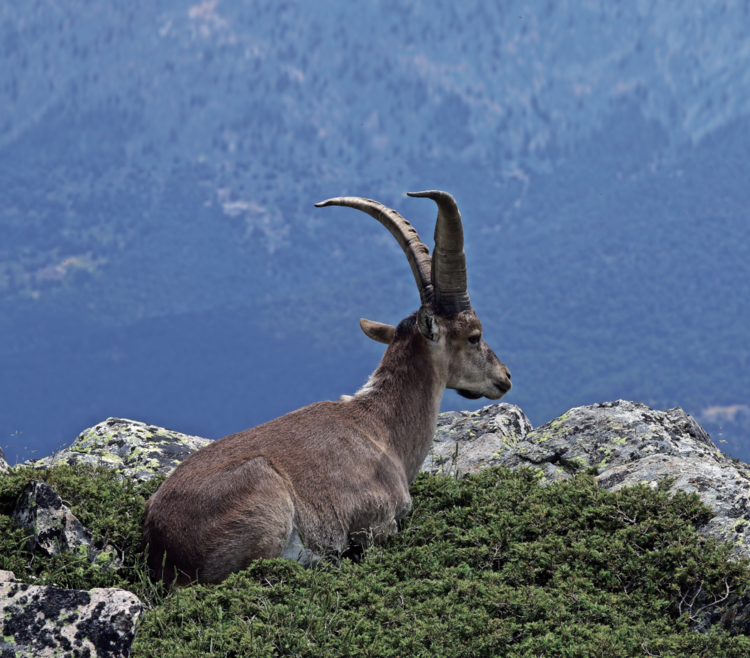
Ronda Goat
"Capra pyrenaica hispanica"
It is the smallest variety in terms of body and horns. It has a lighter and more uniform colour than the other subspecies.
The horns are smaller and grow more vertically and parallel.
Sierra Blanca and Ronda in the province of Malaga and the Grazalema area in Cadiz.
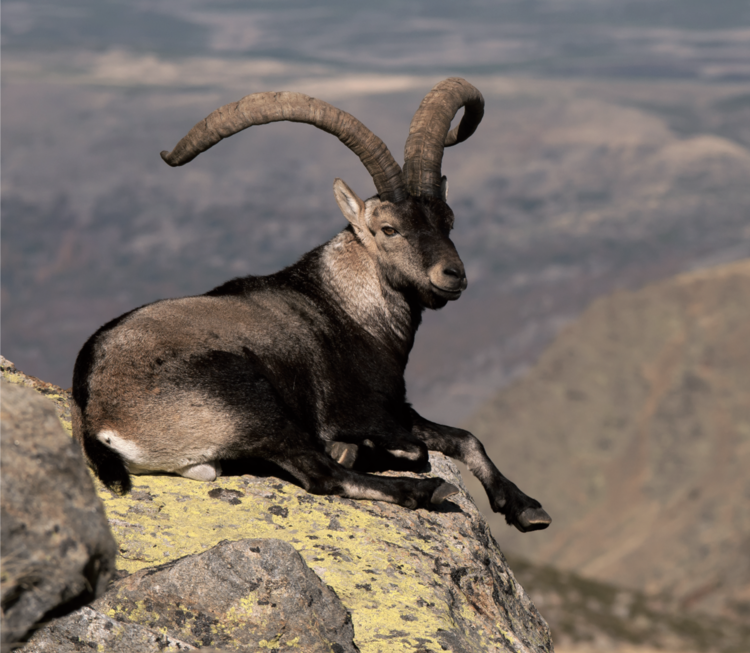
Gredos Goat
"Capra pyrenaica victoriae"
Larger in body size than the other subspecies. Old males can become completely black with winter fur. The most typical antlers form a lyre with up to four curvatures.
In the Sierra de Gredos. It was reintroduced in the R.R.C of Las Batuecas in Salamanca, in those of Riaño, Ancares and Mampodre in León, Sierra del Guadarrama in Madrid and Segovia, Montes do Invernadeiro in Orense and in several mountain ranges of Castilla-La Mancha.